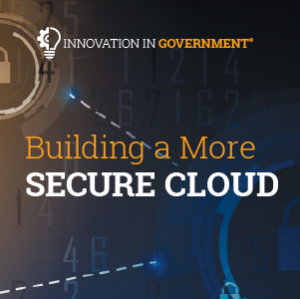In recent years, agencies’ growing need for IT modernization has prompted their biggest suppliers — federal systems integrators (FSIs) — to look for innovative ways to meet that need. FSIs’ deep working knowledge of government operations gives them a distinct advantage, but to provide all the expertise an agency needs on a contract, FSIs have always partnered with subcontractors. Now they are broadening their reach by seeking out cutting-edge companies that can help them develop solutions that incorporate the latest innovations in technology and strategy. Those “greater than the sum of their parts” solutions have a profound impact on agencies’ ability to meet mission-critical demands in a wide range of areas. In a recent survey of FCW readers, only 19% said they always know about the latest technologies. Adopting those technologies requires acquisition processes that are fast and flexible. 75% of respondents said their agencies rely on FSIs for complex IT projects. Many agencies are turning to agile methodologies, either on their own or with contractors, to develop and deliver solutions incrementally rather than taking years to launch a complete system. How can FSIs continue to meet these needs by partnering with innovative tech companies and small businesses? Read the latest insights from industry thought leaders in emerging technology in Carahsoft’s Innovation in Government® report.
A Risk-Adaptive Approach to Data Security
“Protecting data in today’s heterogeneous, highly dynamic IT environments is one of the biggest cybersecurity challenges agencies face, especially now that data is potentially being stored and touched by many people, devices, apps, services and systems. That’s why a strong data protection strategy goes well beyond encryption to incorporate zero trust principles. Rapidly changing IT environments and continuously evolving cyber threats require proactive, high-performing cybersecurity solutions that can adapt on the fly and constantly answer questions about what’s happening to data in terms of who, when, where, what and how. It is essential to create a platform in which tools and analytics can be integrated quickly to respond to current threats. In other words, rather than hundreds of best-of-breed solutions stitched together, agencies require a comprehensive, integrated solution.”
Read more insights from Cloudera’s Senior Director of Global Alliances, Jenn Azzolina, and Raytheon Intelligence and Spaces’s CTO of Cybersecurity and Special Missions, Michael Daly.
Eliminating the Boundaries to Health Care
“The COVID-19 pandemic exposed the reality that our health care system is not a system at all but a series of disconnected providers who struggle to coordinate with one another and support patients on their health journeys. The first generation of health IT was not built around patients. A patient is a different person in every medical system he or she encounters; hence, continuity of care across providers is filled with barriers. The same challenges are pervasive in federal, state and local government health agencies. Even when data comes into a system in a timely manner, it’s often unstructured and cannot be reconciled with the existing record. That puts a heavier burden on doctors, who have to build their own mental model of what a particular patient needs.”
Read more insights from Perspecta’s Chief Medical Information Officer, Shane McNamee, M.D. and Red Hat’s Field CTO for Federal Health, Ben Cushing.
 A Framework for Achieving Data Intelligence
A Framework for Achieving Data Intelligence
“Highly adaptive adversaries confront the U.S. and its allies in every domain: air, sea, space, land and cyber. The aircraft, satellites, ships and ground vehicles that military forces operate collect an abundance of information, but processing and analyzing that amount of data can be daunting, especially given the multiple levels of security in which systems must operate. The Defense Department is pursuing a new way of warfighting based on a concept called joint all-domain operations. By synchronizing major systems and crucial data, DOD provides a complete picture of the battlespace and empowers warfighters to quickly make decisions that drive action so they can disrupt and overwhelm adversaries in seconds versus minutes when seconds really matter. There’s a new asset helping DOD and its allies realize this vision of the future battlespace: data.”
Read more insights from Collibra’s Senior Vice President for Public Sector, Aileen Black, and Lockheed Martin’s Vice President, Mike Baylor.
Partnering to Modernize the Customer Experience
“Working together allows ServiceNow and GDIT to respond to newly emerging capabilities very quickly. Because of its deep understanding of government agencies’ business operations, culture and processes, GDIT can support ServiceNow’s ability to deliver value in new ways. In one example, GDIT saw increasing demand from government customers for solutions authorized at the FedRAMP High level and helped ServiceNow meet this capability. The company now has an offering on Microsoft’s Azure cloud that has been authorized at FedRAMP High and the Defense Department’s Impact Level 5. In another example, GDIT uses insights from initiatives for large federal agencies, such as robotic process automation (RPA) solutions, to drive investments in leading-edge capabilities that have the best chance of achieving the desired outcomes.”
Read more insights from ServiceNow’s Vice President of Solution Consulting, Anto Tossounian, and GDIT’s Vice President of Federal Civilian, Brian Fogg.
Constructing a Next-Generation Data Architecture
“The conversation about data should start and stop with the mission impact and how quality data can improve decision-making and customer services. Once they have a clear understanding of their internal and external data assets — what data they have and how it can be used, along with the owners and sources of that data — agencies can progress toward intuitive AI-driven data catalogs. In addition, agencies should encourage a data-savvy culture across all layers of the organization and continually improve their data so that they can take advantage of modern applications. The volumes of government data would overwhelm any on-premises system, so moving to the cloud is essential for building a modern data architecture. However, simply lifting existing datasets into the cloud doesn’t solve the problem. People will work the way their data is organized, so rather than build data silos and create siloed workforces, agencies must combine data to empower their employees.”
Read more insights from Snowflake’s Chief Federal Technologist, Nicholas Speece, and Deloitte’s Principal of Strategy and Analytics, Vishal Kapur.
A Faster Route to Secure Cloud Adoption for DOD
“Three substantive challenges have made it difficult for Defense Department agencies to adopt cloud technology. First is the complex and lengthy procurement process to obtain cloud services. Second are the networking and security challenges to establish a cloud environment and connection. Third is the costly challenge of refactoring applications for a specific cloud environment. The partnership between DISA’s milCloud 2.0 contract, General Dynamics Information Technology (GDIT) and VMware effectively eliminates all three of these challenges. A native, on-demand milCloud 2.0 VMware environment dramatically simplifies migrations, lowers the risk of cloud adoption by eliminating the refactoring of applications and workloads, and allows users to leverage familiar VMware solutions for a consistent operating model across their enterprise.”
Read more insights from VMware’s Vice President of Federal Sales, Bill Rowan, and GDIT’s Partner Accounts Director for milCloud 2.0, Brian Whitenight.
Download the full Innovation in Government® report for more insights from these government emerging technology thought leaders and additional industry research from FCW.

 Cloud and the Customer Experience
Cloud and the Customer Experience